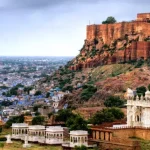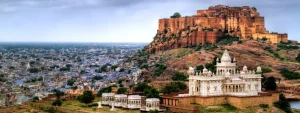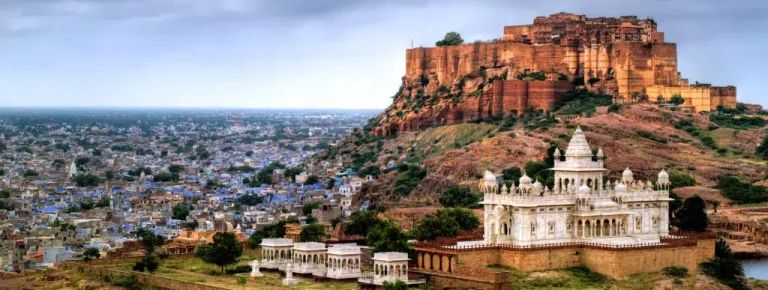Artistic visions represent the unique perspectives and creative interpretations that artists bring to the world. These visions are more than just ideas; they are manifestations of emotions, thoughts, and cultural influences that resonate through various forms of art. From paintings and sculptures to digital media and performance art, an artist’s vision often serves as a lens through which the audience can explore deeper meanings and connections.
Artistic visions are not confined to one particular medium or genre. They transcend boundaries and evolve with time, reflecting societal changes, technological advancements, and personal experiences. The ability of an artist to communicate their vision effectively can shape the way people perceive and interact with art.
Table of Contents
ToggleThe Role of Inspiration in Shaping Artistic Visions

Inspiration plays a pivotal role in the development of artistic visions. It can come from a myriad of sources, including nature, personal experiences, historical events, and cultural narratives. Artists often draw upon these elements to craft works that are both personal and universal in their appeal.
For many, inspiration begins with observation. The way sunlight filters through leaves, the dynamic movements of a bustling city, or the silent majesty of a mountain range can ignite the creative process. Similarly, emotional experiences such as love, loss, and triumph often become central themes in artistic expressions. The fusion of these inspirations results in a vision that is uniquely the artist’s own.
Cultural Influence on Artistic Visions
Culture profoundly impacts artistic visions. Artists often reflect their cultural heritage in their work, using symbols, colors, and techniques that are deeply rooted in tradition. For instance, traditional Japanese woodblock prints often feature natural landscapes and themes of simplicity, reflecting the cultural value of harmony with nature.
Conversely, contemporary artists may challenge or reinterpret cultural norms through their art. This can be seen in movements like street art, where creators use public spaces to question societal structures or celebrate underrepresented communities. Such works often bridge the gap between tradition and modernity, creating a dialogue between the past and the present.
Technological Advancements and New Frontiers in Artistic Expression
The integration of technology into the art world has revolutionized how artistic visions are conceived and realized. Digital art tools, virtual reality, and artificial intelligence provide artists with new ways to experiment and innovate. These technologies enable creators to push the boundaries of traditional art forms, offering immersive and interactive experiences.
Virtual reality, for example, allows viewers to step inside an artwork and explore it from multiple perspectives. Digital platforms also enable artists to reach a global audience, fostering collaboration and cross-cultural exchange. Technology has thus become a powerful ally in expanding the horizons of artistic visions.
Artistic Visions as a Reflection of Society
Art has always been a mirror of society, capturing its complexities, struggles, and aspirations. Through their visions, artists document historical events, address social issues, and advocate for change. For example, many works of art have emerged from movements like civil rights, feminism, and environmentalism, serving as powerful tools for awareness and activism.
Artistic visions also capture the zeitgeist of an era. During the Renaissance, art celebrated humanism and scientific discovery, while the Dada movement responded to the chaos of World War I with absurd and provocative works. Today, contemporary artists tackle issues such as climate change, inequality, and digital surveillance, highlighting the role of art as a catalyst for reflection and action.
The Emotional Power of Artistic Visions

One of the most compelling aspects of artistic visions is their ability to evoke emotion. Whether it’s the serenity of a landscape painting, the tension of a dramatic sculpture, or the raw energy of a street mural, art has the power to resonate deeply with its audience. This emotional connection often transcends language and cultural barriers, uniting people through shared human experiences.
Artists use various techniques to convey emotion, from bold color choices and dynamic compositions to subtle textures and intricate details. These elements combine to create a sensory experience that allows viewers to connect with the artist’s vision on a personal level.
Artistic Visions in Modern Art Movements
Modern art movements continue to redefine what artistic visions can achieve. Abstract art, for instance, focuses on shapes, colors, and forms rather than realistic representations, challenging viewers to interpret the artist’s intention. Similarly, conceptual art prioritizes ideas over aesthetics, prompting discussions about the nature and purpose of art itself.
Other movements, such as installation art and performance art, emphasize the experiential aspect of artistic visions. These forms often blur the lines between artist and audience, encouraging active participation and engagement. In doing so, they expand the possibilities of how art can be experienced and understood.
Nurturing Artistic Visions in the Next Generation
Encouraging creativity in younger generations is crucial for the continued evolution of artistic visions. Education plays a vital role in this process, providing aspiring artists with the tools and knowledge to develop their skills. Art programs in schools, community workshops, and mentorship opportunities can inspire individuals to explore their creative potential.
Exposure to diverse art forms and cultures also broadens the scope of what young artists can achieve. By experiencing different perspectives, they gain a deeper understanding of the world and their place within it, enriching their artistic visions.
The Role of Collaboration in Artistic Visions

Collaboration is another significant factor in the growth of artistic visions. When artists work together, they combine their unique perspectives and skills to create something greater than the pwvip4d sum of its parts. Collaborative projects often lead to innovative outcomes, as each participant contributes their expertise and creativity.
These partnerships can occur within the same discipline or across different fields. For instance, musicians and visual artists might collaborate to create multimedia performances, while architects and sculptors could join forces to design public art installations. Such endeavors highlight the interconnectedness of art and the endless possibilities for creative exploration.
Challenges in Realizing Artistic Visions
Despite the boundless potential of artistic visions, realizing them can be fraught with challenges. Financial constraints, limited access to resources, and societal pressures are common obstacles faced by artists. Additionally, the subjective nature of art means that not all audiences will interpret or appreciate a vision in the way the artist intended.
Overcoming these challenges often requires resilience and adaptability. Many artists turn to alternative platforms, such as social media or crowdfunding, to share their work and gain support. Others find inspiration in adversity, using it as a catalyst for creative growth.
The Enduring Impact of Artistic Visions
Artistic visions have the power to leave a lasting legacy. Iconic works such as Leonardo da Vinci’s Mona Lisa, Frida Kahlo’s self-portraits, and Banksy’s provocative street art continue to influence and inspire generations. These pieces serve as a testament to the enduring impact of creativity and the human spirit.
As society continues to evolve, so too will artistic visions. The future holds infinite possibilities for new forms of expression, driven by technological advancements, cultural shifts, and individual ingenuity. In this ever-changing landscape, art will remain a vital force, enriching lives and shaping the world.










